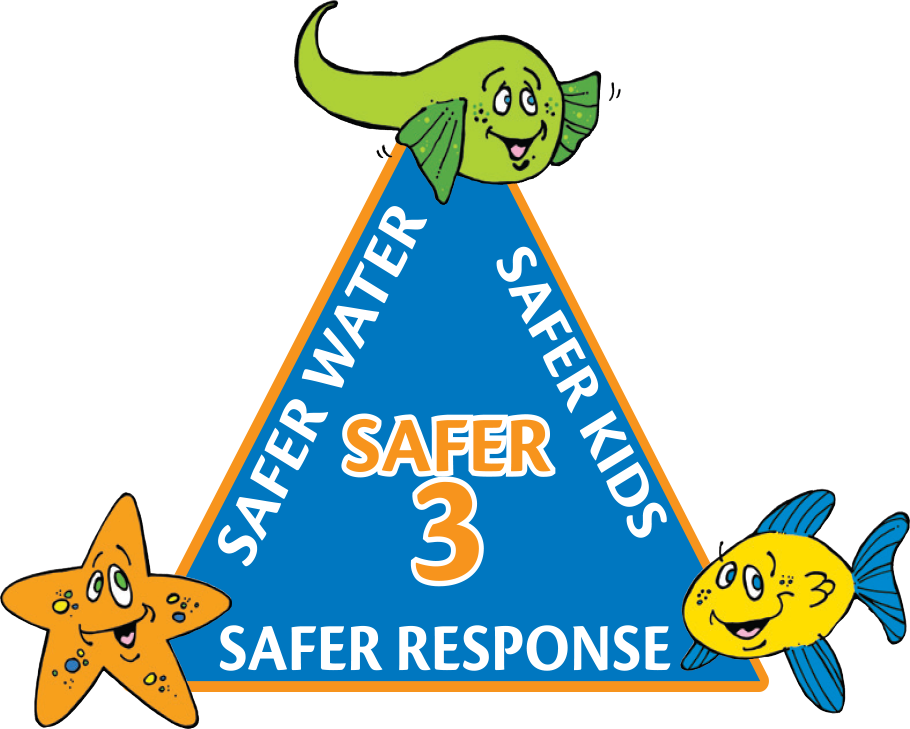
Swimming Lessons and Water Safety Best Practices
Death and injury from drowning happen every day in pools; natural bodies of water; toilets; bathtubs; and even buckets. The statistics are staggering: ten people drown every day for a total of 3,400 each year. It’s a leading cause of accidental death among children of all ages and the single leading cause of injury-related death among children ages one to four.
Drowning can happen almost anywhere to anyone as several families learned in October of this year after heart-wrenching tragedies struck. Four children drowned over a three-week period in Florida. Two drowned at backyard pool parties; another slipped through a sliding glass door that was left open; and one involved a young boy with Autism who wandered into a neighbor’s pool. Parents in Jackson, Mississippi mourned the bathtub drowning death of their eight-month old daughter and a family in Michigan grieved for their seven-year old son who drowned while trying to catch frogs in a family pond.
Although swimming lessons don’t necessarily prevent drowning and are not a substitute for adult supervision, it’s important to teach children to swim. According to the American Academy of Pediatrics, most children age four and older can learn to swim. Children ages one to four might be able to learn depending on their physical and emotional development. Several organizations, such as the American Red Cross, Boys & Girls Clubs, YMCAs and municipal and neighborhood pools provide low-cost and even free swimming lessons.
The key to preventing these heartbreaking disasters is education and knowledge. Instill a culture of water safety by following these best practices.
Supervise. Never leave children unsupervised near a body of water, including a bath. The families of drowned children know that it can happen in a matter of seconds. If children are near water, you should never presume that someone else is supervising them. Children under age four should be supervised at arm’s length, even if they can swim. Don’t rely on air-filled or foam toys, such as water wings, noodles or inner tubes, to keep children safe.
Learn CPR. All parents and childcare providers should learn cardiopulmonary resuscitation (CPR). Many organizations such as the American Red Cross, fire departments and hospitals offer CPR certification courses.
Avoid alcohol. Don’t drink alcohol when you are boating, swimming or supervising children who are swimming or playing in water.
Fence in home pools and add alarms. Install a fence at least four feet (1.2 meters) tall that separates the pool area from the house and yard. Install self-closing and self-latching gates that open away from the pool and alarms that sound an alert when someone enters the pool.
Stay in designated areas. At public beaches, swim only in areas set aside for swimming. Pay attention to posted warnings about unsafe swimming conditions. Don’t allow children to swim in drainage ditches, abandoned surface mines or other water-filled areas not intended for swimming.
Watch out for thin ice. Drowning can occur in cold weather, too. Avoid walking, skating or riding on weak or thawing ice. Pay attention to posted warnings regarding ice safety and consult a local department of recreation for current ice conditions.
Keep bathroom doors closed. Install a safety latch or door-knob cover on the outside of the door.
Store buckets and containers safely. Immediately empty buckets and other containers after use. Don’t leave them outside where they might accumulate water.
Help us eliminate drowning and save lives so no families suffer. Your donation can help keep more kids safe. Together, we can have a future where no one drowns.

Under Your Watch:
Parent’s Guide to Keeping Loved Ones
Safer in Water
As parents we want to protect our children as much as possible. We protect them in the car with car seats, from the sun with sunscreen, running with scissors, stranger danger; the list goes on and on. Water safety and water education should not be at the bottom of the list.
When it comes to water, the word “safe” doesn’t apply. There is always risk when you are in, on or around the water.
Here is a list to help keep your loved ones SAFER in the water under your watch.
#1 Never Leave Your Child or Friend Swimming Alone
Whether they are at a pool party or at the grandparent’s backyard pool, no one should ever swim alone. Make sure there will be lifeguards present at parties or have all designated adults wear “water watcher” tags. There should be eyes on the water at all times. If you would like more info on water watcher tags follow this link…
https://www.stopdrowningnow.org/product/water-watcher-card/
#2 Take Swim Lessons
Swim lessons are not just for children! Look into adult swim lessons for yourself. Learning to swim while your child does could be a great bonding activity. It will insure a lifelong safer experience.
#3 Learn CPR
Every parent should take a CPR and First Aid class. CPR is a life-saving technique that helps maintain blood flow to the brain and heart in an emergency situation.Being the first responder for anyone can make a world of difference. For more information on CPR classes click the link below…
#4 Life Vest
If your child or even an adult friend does not know how to swim, a life vest can be the difference between life and death. A day on the water should be a fun experience – keep it that way by properly fitting everyone with a life vest before the fun begins. Be honest with your child on the important reasons for wearing a life vest. You can never be too safe on the open water or pool; life vests will ensure a safer experience.
#5 Don’t Play Breath-Holding Games
A day playing in the water will always consist of games. Make sure these games are safe for all levels. Plan games ahead of time that can be played so everyone has a good time. Fun relay races, Marco Polo, Duck-Duck-Splash, Water Limbo, and more – games that are not a breath-holding contest will help keep your mind at ease.
#6 Don’t Swim in Hazardous Conditions
Unexpected hazardous conditions can arise while in or on the water. On the lake or ocean large set of waves, lighting storms, ripe tides, jellyfish. Always be on guard. Talk to the Ocean Lifeguards on duty to see if the water is safe. Even the strongest swimmer can be put off guard. In the pool, make sure the pool is free of broken glass, bodily fluids, murky water. Just because the pool has “still” water doesn’t mean it can’t turn hazardous. Remember: If you can see lighting or hear thunder, it’s time to get out of the water.
#7 Throw, Don’t Go
If you are not a comfortable swimmer, in the case of an emergency do not go into the water to rescue a loved one. The outcome could end with two losses. Look around to see what life-saving flotations are around. Have an adult who knows how to swim jump in feet first to help rescue while you go call 911.
Overall, we want our loved one’s safe in all circumstances. It starts with you educating yourself on the rules and cues of the water, and translating that to your child. Everyone needs to know that while water is fun it can also be extremely dangerous. Be prepared, be aware, but always have fun, follow the Safer 3: Safer Kids, Safer Water, Safer Response.

Why Dry-Land Drowning Prevention Education Should be Prioritized:
By Dan Berzansky
When we think of drowning-prevention, it’s likely that we are relying on swim lessons and adding security to our backyard pools. But what about other sources of water that can pose as dangers to children? Bathtubs, toilets, puddles, outdoor water features, and any other source of open water can be a threat to a child’s safety – which is why emphasizing the importance of drowning prevention is necessary for all children, no matter their proximity to water.
Not all children live near pools, however, drowning remains the number one cause of accidental death for children ages
1-4 years old and 88% of drownings occur with at least one adult present. For many families, formal swim lessons are a luxury not all can afford; it’s time to start thinking of other resources for water-safety education.
Starting at an early age, we educate our children about the importance of health and safety –things like wearing a seatbelt, looking both ways when crossing the street, the dangers of smoking, and how to react in a fire emergency. Why shouldn’t drowning prevention be included in these classroom education programs?
Stop Drowning Now’s Water Safety Curriculum has reached 90,000 children so far in the effort to eliminate drowning. Through songs, games, stories, and other hands-on, age-appropriate activities, children are fully engaged in learning to recognize drowning risks in order to protect themselves and others. Some water safety topics you should cover with your children include:
-Always stay away from water unless there is an adult present.
-Stop, throw, don’t go! – if a friend or sibling is in trouble in the water, throw them something to grab on to and go get help, but never jump in to save them.
-Know exactly who to call in case of an emergency – 911!
-Set and practice an Emergency Action Plan
According to the International Academy of Education, creating interesting and challenging learning environments and providing hands-on activities allows children to successfully participate in cognitive activities for long-term memory. The curriculum writers of SDN Water Safety Curriculum did just that. They applied their 30 years of teaching experience to develop a program that makes water safety interesting, challenging and fun!
For More information about the important of water safety please visit the following links:
Safe Kids:
https://www.safekids.org/research-report/hidden-hazards-exploration-open-water-drowning-and-risks-kids
Stop Drowning Now Curriculum:
International Bureau of Education:
http://www.ibe.unesco.org/sites/default/files/resources/edu-practices_07_eng.pdf
Facebook
Twitter


